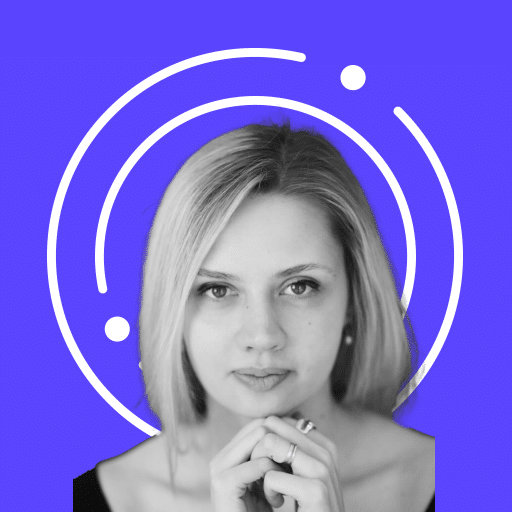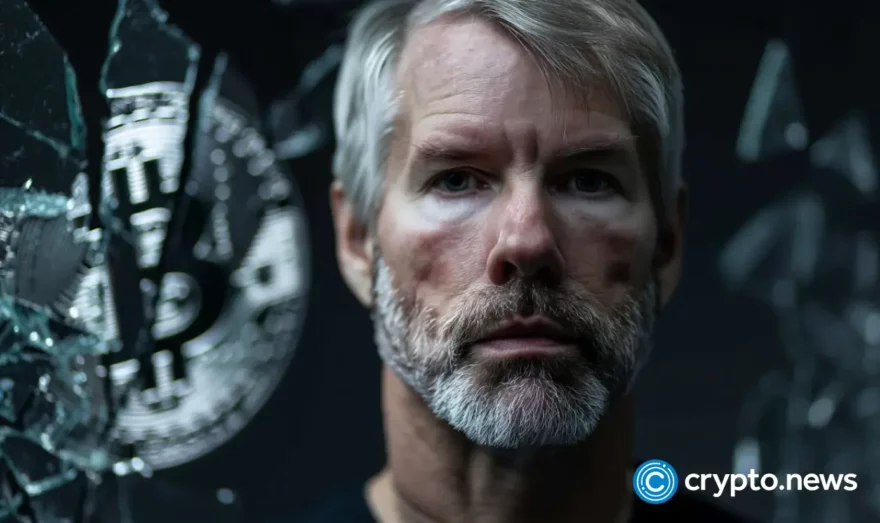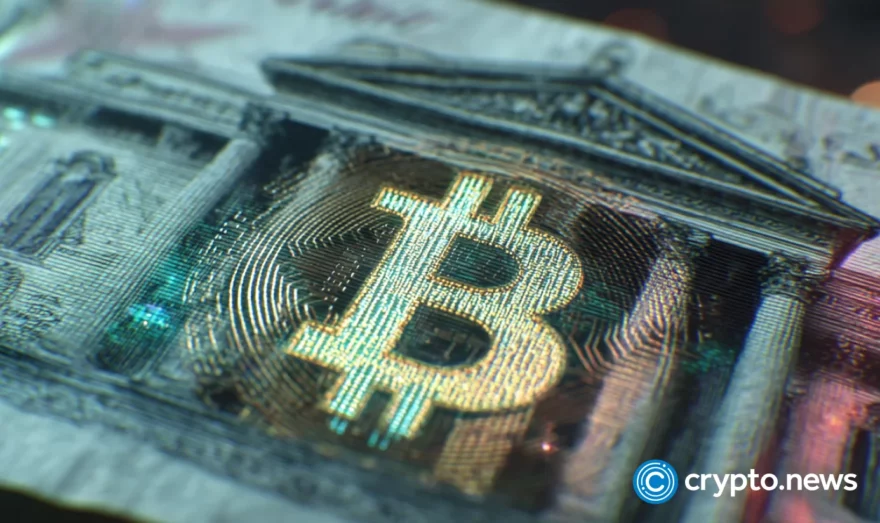Centralization vs. Decentralization: what’s the difference?

As traditional systems of control are challenged by blockchain technology, people are increasingly questioning how power should be distributed — whether in finance, governance, or beyond.
With the rise of cryptos, centralization vs. decentralization has become a key topic in global discussions. While much has been said about both, what should you really know about these concepts?
Table of Contents
What is centralization
A centralized system incorporates a formal hierarchy in implementing vital organizational decisions. Power and authority may be diffused from a center of control. The centralized governance system is the world’s most widely used system.
Almost every commercial organization on the planet implements this mode of governance, from social platforms such as Facebook and X to renowned entertainment outlets such as YouTube and Netflix.
Mode of operations
Centralization implies that the highest level of an organization’s hierarchy has authority and total control over its functions and data. In this form of governance, power originates from a central point and flows down to other arms of the organization for implementation.
A good example is that when using most streaming platforms, they have total control over the various aspects of their features. These features include but are not limited to, the ability to determine who can and who cannot use the platform. They will also decide what to air and what to censor.
Privacy
Users’ information is accessible to centralized data service providers. The data is also saved with the users’ permission. Users who create an account on a centralized platform are prompted to provide a digital signature agreeing to the terms and conditions.
The signature validates the user’s agreement to abide by all of the platform’s policies. Some platforms also need human verification to ensure no bots operate within the forum. KYC (Know Your Customer) regulations apply to some centralized entities that engage in financial activities. To use the platform, users must provide the following:
- Their full name.
- Nationality.
- Date of birth.
- Any other information the platform may require from the user.
What is decentralization
Decentralization is a form of governance in which decisions are made at numerous levels of the institution. Decentralized companies have a ruling method that is typically segmented into groups. The main goal of these minute groups is to improve the company’s success and achieve inclusion in decision-making processes.
The concept of decentralization makes the dream of freedom a reality. Instead of focusing on the devolution process of centralized governance, people get to focus on more important factors.
CZ, Binance CEO: “Decentralization brings a sense of freedom, security, and ease of use.”
In the crypto world, decentralization is supposed to make life easier. It is frustrating to wait a couple of days to process some transactions simply because it’s a weekend or bank holiday. Here are some of the ways how the future could be more decentralized:
- Fully digital and decentralized finance systems
- Decentralized internet
- Creators focused on streaming and media distribution platforms
- Digital democratic systems in countries like voting on policies and for lawmakers
- Total control of digital identities and data by owners and not corporation.
How far should decentralization go?
Decentralization has a long way to attain massive adoption, especially on mainstream platforms used by millions of people every day. Even though there is a high likelihood of massive adoption, the system is most likely not going to exist without incorporating centralization aspects.
A hybrid system will solve many decentralization challenges
Through careful consideration, it is clear that decentralization may not be fully successful. Some aspects of the system need to be diluted with elements of centralization. The decentralized hybrid that borrows vital elements of centralization may be a possible win for the entire planet.
The hybrid would give a better chance for the world to achieve freedom and productivity alike. A perfect example of such an arrangement is in crypto exchanges. Some centralized exchanges such as Binance and FTX have developed to greatness through both centralization and decentralization.
Reducing susceptibility to external forces
Deriving from the current status in the crypto market, centralized platforms are less likely to be attacked by cyber attacks as they have stricter security protocols. Since 2019, most of the attacks in the crypto space have been targeting the DeFi sector.
Centralized platforms have very many next-level security measures like KYC and Anti-money laundering systems. They also have two-factor authentication systems which make funds safer for their users. In other setups, the centralized platforms vet individual protocols before integrating them into their systems while fully decentralized platforms would go by popular vote structure.
These differences can be used to derive the need for limiting decentralization in matters concerning the security of assets. The main reason is to help in drawing logical and acute decisions in the fastest way possible in the event of security attacks.
Key differences between centralization and decentralization: decentralized versus centralized
What is the main difference between centralization and decentralization? There isn’t just one. Below, you’ll find the most essential difference between centralization and decentralization with examples.
1st difference: decision-making authority
In a centralized system, decision-making is concentrated in the hands of a few top executives. Platforms like Facebook, Twitter, YouTube, and Netflix exemplify this model, where all major decisions about features, content, and user management are made by a central authority. This structure ensures consistent policies and streamlined operations.
Conversely, decentralization distributes decision-making across multiple levels or groups within an organization. Emerging technologies like blockchain and cryptocurrencies highlight this approach, where decisions are made closer to the point of impact. This model promotes greater autonomy and flexibility, aiming to enhance responsiveness and reduce bureaucratic delays.
2nd difference: privacy and security centralized
Centralized systems typically require users to provide detailed personal information, often subject to strict regulations such as Know Your Customer (KYC) requirements. This centralized control facilitates streamlined management but can also make user data a target for breaches since it’s stored in a single location.
Decentralized systems work differently by spreading data across multiple nodes, which can improve privacy and security since there’s no single point where everything could go wrong. For instance, decentralized technologies aim to give users more control over their data, though they also face challenges in maintaining consistent security across all nodes and achieving widespread adoption.
3th difference: user engagement
In centralized systems, user engagement in decision-making is generally limited. Users often have little influence over platform policies or features, as decisions are made by a central authority, which can lead to a sense of disconnect.
Decentralized systems encourage more user involvement and engagement by allowing stakeholders to participate in decision-making processes. This approach, seen in decentralized autonomous organizations (DAOs) and other community-driven models, aims to create a more participatory and inclusive environment.
Centralization: pros and cons
What are the advantages and disadvantages of both centralization and decentralization?
Although highly ridiculed by crypto enthusiasts, centralization has proven to be one of the world’s most successful modes of governance. It has been used for a long time, reaping massive user benefits.
Advantages
The following are some of the advantages of the governance system.
Easily manageable center of command
Centralization, as the name suggests, incorporates a centralized means that everyone in the organization understands their role and to whom they must report. They also know who is under their command and are accountable for their subordinates’ actions.
Due to the chain of command, delegation is simple in the chain. Top officials can easily assign tasks to their associates. The assigned supervisors will ensure that the work is completed effectively and efficiently.
Streamlined flow of communication
A centralized organization benefits from a transparent communication chain from the center of authority. When junior staff members have difficulties performing their duties for the company, they know who to contact.
On the other hand, senior executives have a well-defined framework for assigning responsibilities to employees who succeed at specialized skills. This transparent chain of command is beneficial when a company wants to make decisions quickly and continuously.
High productivity
A centralized organization adheres to standard operating procedures. The procedures aid in reducing office and administrative costs. There is no need to relocate additional because the majority of the company’s decision-makers are based there.
Since critical decisions are made at the corporate level and faster, the company does not need to spend extra money on specialized personnel. The command center and streamlined communication flow ensure the organization registers high productivity.
Disadvantages
Centralized governance also has various shortcomings. Here are a few examples.
Authoritative administration
Centralized management leadership may lead to the dictatorial ruling. Due to the nature of operations, Employees may only produce results to satisfy their supervisors. Lower leveled employees do not have a chance to participate in any decision-making. They follow orders from above and implement them accordingly.
On the other hand, the top dogs in the entity do not understand what it takes to meet different objectives, as they mainly focus on the goal and not the process.
Administrative delays
Centralized management ensures that all critical decisions, implementation follow-ups, and updates get to the center of authority. This mode marks the increase in workload and a consequent increase in delays. Tasks will take longer to get approved by the management. Employees will also face immense pressure from increased dictation from the administration.
The increased workload may subsequently cause delays and slow-moving processes.
Inhibits initiative
Staff members are loyal to an organization that allows them to manifest their personality at work. They could demonstrate their creativity by suggesting improved ways to complete specific tasks. However, most centralized entities only use staff members for implementation. In other words, the staff is hired to execute and not initiate.
The initiative is left to the executive and top dogs when authority originates from a central point in the organization. The organization could be missing out on big ideas from the people working in the field.
Decentralization
Let’s move on to the advantages and disadvantages of decentralization.
Advantages
Decentralization of power and authority has been an upcoming trend, especially through the implementation of blockchain technology. The following are some of the advantages of the governance system.
Employee motivation
Decentralization increases job satisfaction, particularly among lower-level managers. It also strives to meet the various requirements for involvement, autonomy, and prestige. The devolution also fosters a sense of cohesiveness and spirit.
Diversification and growth
Due to decentralization, every product division gains enough independence to perform its creative flair. In this manner, upper executives can foster a competitive spirit among various divisions. It is important to note that decentralization allows employees to exercise their judgment. In crypto, the project will be in a position to advance new markets such as NFTs.
They even help to develop management skills and solve the primogeniture problem, ensuring an organization’s growth and development.
Faster decision-making process
Another significant advantage of decentralization is that decisions are made and carried out by authorized personnel. Issues that arise are handled at lower management levels. This, in turn, leads to faster and more accurate decisions that are well-informed about the current situation.
Fewer expansion difficulties
Decentralization can add momentum to a rising company’s expansion. This frequently results in establishing new business units in various geographical locations or spreading to other technical fields.
Decentralization enables the company to realize its maximum potential and respond quickly to emerging issues during its growth phase.
Disadvantages
What’s wrong with decentralization?
Coordination is difficult
While discussing the benefits and drawbacks of decentralization, it is essential to note that each segment has significant independence over the others. This, in turn, complicates overall activity coordination when disputes arise from the different segments.
External factors susceptibility
Due to the difficulty in coordination, decentralized governance systems become susceptible to external forces. Trade union movements, market insecurity, and administrative interventions may make maximizing the full benefits of decentralization systems challenging.
Limited lines of products
Decentralized business units must be sufficiently broad so that independent teams can thrive within them. Decentralization may not be helpful to smaller companies and businesses with limited product lines. The lack of qualified supervisors at lower levels of the organization exacerbates the challenge quotient.
Increased costs
Decentralization means that each staff member takes full responsibility for the betterment of the organization. The employees work harder to meet all organizational goals. In exchange, they must be compensated more, which can be very costly for the organization.
Final remarks
After examining centralization versus decentralization, it is essential to note that these two forms of governance provide different results to various industries. A sneak peek at decentralization in finance may show adverse advantages, including bringing power back to the people. Decentralization brings the reality of freedom to a possibility; however, external factors significantly undermine the system.
A hybrid system that combines the two systems may be pretty helpful in solving some of these challenges. Entities offering decentralized products and services may find the hybrid in hand. Decentralization is still unpopular among organizations outside blockchain technology. However, this may soon change as distributed ledger technology gains massive adoption and incorporation in various industrial sectors.















